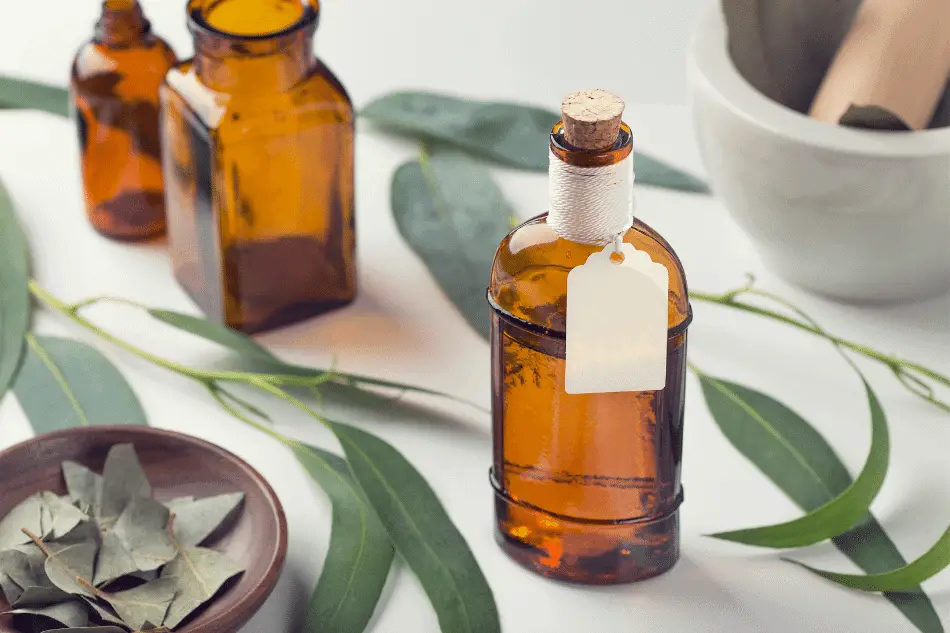Eucalyptus Oil is an essential oil derived from the leaves of the eucalyptus tree. So how to make eucalyptus oil? The oil has a fresh, camphoraceous scent and is used in aromatherapy to promote feelings of clear breathing and relaxation. According to research, eucalyptol, a component of eucalyptus oil, has antibacterial, antiviral, and anti-inflammatory properties.
Eucalyptus oil is used topically (applied to the skin) for joint pain and muscle aches, and it is also added to massage oils and lotions. When inhaled, eucalyptus oil is thought to help relieve congestion from colds, flu, and sinus infections. To make eucalyptus oil, the leaves of the eucalyptus tree are steam-distilled to extract the essential oil. The resulting oil is a clear, pale yellow liquid with a strong, fresh, camphoraceous scent.
Making eucalyptus oil is a simple process that may be done in several ways, depending on your materials and how much time you want to invest.
How To Make Eucalyptus Oil?
Eucalyptus oil has an earthy, natural fragrance that most people love or hate. It’s often used as a therapeutic aid by aromatherapists and herbalists for its various benefits, including relief from colds and respiratory problems like bronchitis-inducing asthma attacks in those with sensitive airways.
The primary way to make this oil is through steam distillation. This involves using a still to extract the essential oils from the leaves and other plant parts. It’s a relatively straightforward process, but it does require some specialized equipment and materials.
If you don’t have access to a still, you can also make a crude form of eucalyptus oil by macerating the leaves in olive oil or another carrier oil for several weeks. This won’t produce a pure essential oil, but it will still have some of the same beneficial properties.

Here’s my step-by-step guide to making eucalyptus oil at home:
1. Start with a fresh batch of eucalyptus leaves. If you’re using dried leaves, make sure they haven’t been exposed to excessive heat or light, as this can degrade the oils.
2. Place the leaves in a still or pressure cooker. Add enough water to cover the leaves and bring the mixture to a boil.
3. Place the leaves and oil in a crockpot or on low heat for six hours. Alternatively, mix with a jar of sunning outside over two weeks until the desired flavor has been achieved.
4. Strain the mixture and collect the eucalyptus oil that has been released.
5. To enjoy the benefits of this oil, pour it into a mason jar and store it in an area with good ventilation. The shelf life for this product is about six months when stored at room temperature (preferably around 40 degrees Fahrenheit or 4 Celsius). If refrigerated, its longevity will increase significantly – usually up to 1 year!
You can use this essential oil in several ways. For example, you can add a few drops to a diffuser to help clear your sinuses or relieve congestion. You can also add it to lotions and massage oils for a soothing, relaxing effect. You can even add a few drops to your bath water for a refreshing, detoxifying experience.
Unique Tips
When making eucalyptus oil, choosing a high-quality essential oil is essential. Look for an oil that is 100% pure and therapeutic grade. If you’re using dried leaves, make sure they haven’t been exposed to excessive heat or light, as this can degrade the oils.
If you’re using the oil topically, it’s essential to do a patch test first to ensure you’re not allergic. Apply a small amount of the diluted oil to a small area of skin and wait 24 hours to see if there is any reaction. If there is no reaction, you can proceed with using the oil as desired.
When using this oil, always remember to dilute it properly. For most people, a 2-3% dilution is sufficient. This means adding 20-30 drops of eucalyptus oil per ounce of carrier oil or lotion. If you have sensitive skin, you may want to start with a lower concentration and increase as tolerated.
As with any essential oil, caution is necessary when using eucalyptus oil around children and pets. Consult a qualified aromatherapist or medical professional before using the oil if you have any concerns.
Cautions
- When using eucalyptus oil for the first time, test it on a small area of skin to check for any allergic reaction. Eucalyptus oil is toxic if ingested, so keep it out of reach of children and pets.
- If you have asthma or other respiratory conditions, consult your doctor before using eucalyptus oil. Inhaling the vapors may aggravate your condition.
- When using this essential oil externally, dilute it with a carrier oil such as jojoba oil or almond oil. Do not apply it directly to your skin.
- If you are pregnant or breastfeeding, consult your doctor before using eucalyptus oil.
- People with high blood pressure, heart problems, or other medical conditions should use eucalyptus oil with caution and only under the supervision of qualified health care professionals.
- Eucalyptus oil can be toxic if ingested in large quantities, so keep it out of reach of children and pets.
- If you experience any adverse reactions after using eucalyptus oil, discontinue use immediately and consult a qualified health care professional.
How to Plant Eucalyptus Trees
Eucalyptus trees are native to Australia, but they can be grown in other parts of the world. They prefer warm climates and well-drained soil.
When growing eucalyptus trees, it’s essential to choose a location that gets full sun and has plenty of room for the tree to grow. Eucalyptus trees can grow quite large, so be sure to plant them in an area where they won’t crowd other plants.
To plant eucalyptus trees, dig a hole twice the width of the tree’s root ball and just as deep. Place the tree in the hole and backfill with soil. Water deeply and regularly until the tree is established.
Eucalyptus trees are fast-growing, so you must prune them regularly to keep them in shape. Prune in late winter or early spring before new growth begins.
When pruning eucalyptus trees, remove any dead or diseased branches. Cut back any branches that are growing in the wrong direction. If the tree is too large for the space, you can prune it back to reduce its size.
Eucalyptus trees are relatively low-maintenance, but you must water them regularly during dry periods. They are also susceptible to pests and diseases, so keep an eye out for any problems.
If you live in an area with cold winters, you will need to protect eucalyptus trees from the cold. Mulch around the tree’s base to help insulate the roots, and wrap the trunk with burlap or other fabric. You may also need to provide some additional water during the winter months.
Eucalyptus trees are an excellent choice for adding some greenery to your home. With proper care, they can thrive for many years.
Wrapping Up
Eucalyptus oil has a wide range of uses and benefits. You can use it to relieve congestion and cold symptoms, improve circulation, reduce inflammation, etc. When using eucalyptus oil, dilute it properly and use caution if you have asthma or other respiratory conditions. If you experience any adverse reactions, discontinue use immediately and consult a qualified health care professional.

